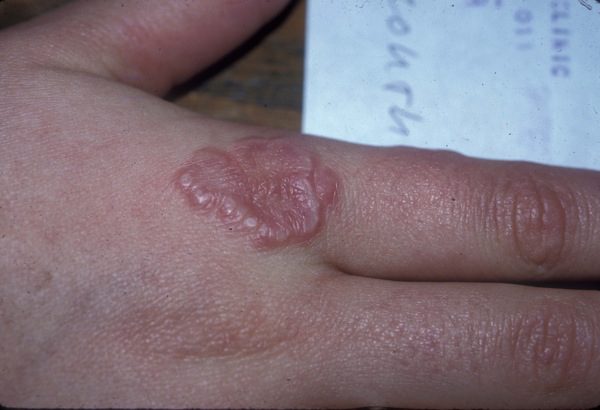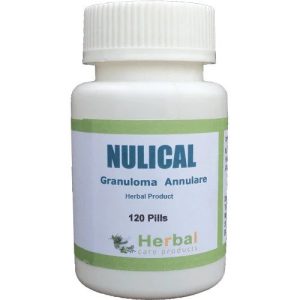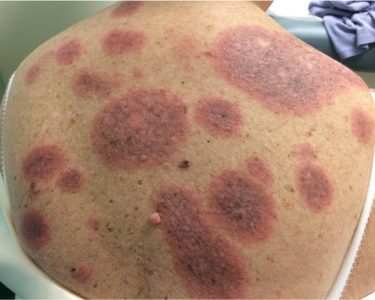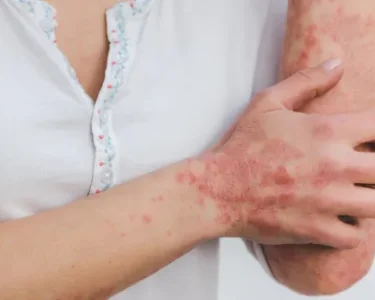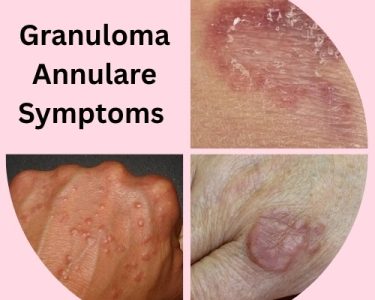Granuloma annulare is a relatively uncommon, chronic skin condition characterized by a distinctive rash. The exact cause of granuloma annulare remains unknown, but it is generally considered benign and often resolves on its own without treatment. The details of the granuloma annulare rash, including its symptoms, possible triggers, and treatment options.
What is Granuloma Annulare?
Granuloma annulare is a skin condition that presents as raised, reddish or skin-colored bumps arranged in a ring or circular pattern. These bumps, or lesions, are typically firm to the touch and can vary in size from a few millimeters to several centimeters in diameter. The rash commonly appears on the hands, feet, elbows, and knees but can occur on any part of the body.
Symptoms of Granuloma Annulare Rash
The granuloma annulare rash is primarily characterized by the following symptoms:
- Ring-shaped Lesions: Circular or semicircular patches of raised bumps are the hallmark of this condition.
- Color Variations: The lesions can be red, skin-colored, or slightly darker than the surrounding skin.
- Itching or Discomfort: While many people experience no symptoms aside from the rash, some may report mild itching or discomfort.
Granuloma Annulare Possible Triggers and Risk Factors
The exact cause of granuloma annulare is not well understood, but several factors may contribute to its development:
- Injury or Trauma: Skin injuries, including minor trauma or insect bites, can trigger the rash in some individuals.
- Infections: Certain infections, such as hepatitis or HIV, have been associated with granuloma annulare.
- Diabetes: There is a noted correlation between granuloma annulare and diabetes, though the relationship is not fully understood.
- Genetic Predisposition: A family history of granuloma annulare may increase the likelihood of developing the condition.
Granuloma Annulare Diagnosis
A diagnosis of granuloma annulare is typically made through a clinical examination of the rash. In some cases, a skin biopsy may be performed to confirm the diagnosis. The biopsy involves taking a small sample of the affected skin to be examined under a microscope.
Granuloma Annulare Treatment Options
Granuloma annulare often resolves on its own without treatment, especially in mild cases. However, for persistent or bothersome rashes, several treatment options are available:
- Topical Steroids: Corticosteroid creams or ointments can reduce inflammation and help the rash clear more quickly.
- Intralesional Steroid Injections: Injecting steroids directly into the lesions can be effective for stubborn or extensive rashes.
- Cryotherapy: Freezing the lesions with liquid nitrogen can promote healing.
- Light Therapy: Ultraviolet light therapy (PUVA) can be used in more severe cases.
- Oral Medications: In rare cases, oral medications such as antibiotics, antimalarials, or immunosuppressants may be prescribed.
Living with Granuloma Annulare
While granuloma annulare can be a chronic condition, it is generally not harmful. Most people with the rash do not experience significant discomfort or complications. For those who do, following a dermatologist’s recommendations and trying different treatments can help manage symptoms.
Conclusion
Granuloma annulare rash is a distinctive skin condition that can affect individuals of all ages. Although the exact cause is unknown, understanding the symptoms, triggers, and Herbal Supplements for Granuloma Annulare options can help those affected manage the condition effectively. If you suspect you have granuloma annulare or are experiencing persistent skin issues, consulting a healthcare professional is the best course of action.

